I’ve used a Mac for most of my life and it’s a great computer. What I really like about Mac computers is the power from the inside. I’ve recently had some problems with my MacBook Pro that led me to searching for a way to find CPU usage easily. I searched the internet for a solution for my problem, but it turned out that my laptop just got the wrong software update which causes overheating issue on the CPU. In this article, I will show you how to monitor CPU usage in case you have similar problems like me.
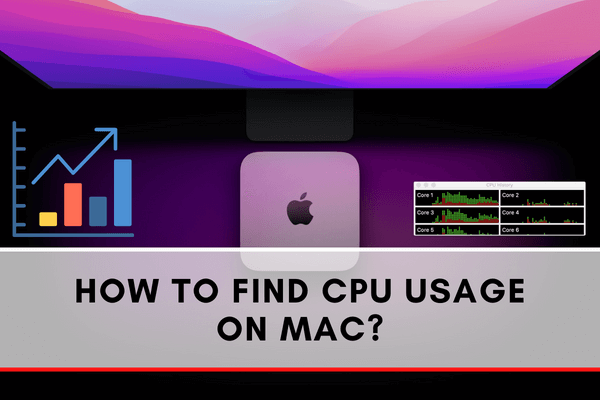
CPU stands for Central Processing Unit, which is the core part of a computer. Although a computer is a package of multiple devices, the CPU can be considered the most important part of it. Less CPU usage means more available computer power. So, keeping the CPU usage in check is important to enjoy maximum performance from your Mac.
What causes the CPU usage to increase?
CPU controls your entire system. Therefore, more apps that are active, more will be your CPU usage. It may even get up to 100% usage when required, which isn’t something you would want. It would probably be a good indicator of the fact that you need to upgrade your Mac.
To do that, you have a monitor your CPU usage every once in a while. Then you will be able to track your CPU usage. Here in this article, we would like to give you a short but precise idea about CPU and how to keep a check on Mac’s CPU usage so that users can stop unwanted programs and keep their Macs relatively fast.
Steps to find your CPU usage
Checking CPU usage on Mac is pretty easy. You can follow the steps below to find the CPU usage of your Mac.
- Open the Launchpad and open the “Activity Monitor” application from there. You may also find that in the Applications folder.
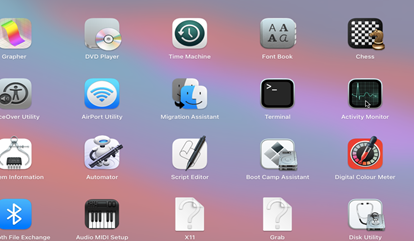
- It would take you to the CPU tab by default, where you will find all processes running on your Mac. Here you can also check the CPU usage for every process.
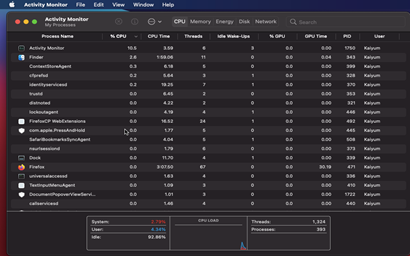
- From this tab, you will be able to close an app if needed. You can close a heavy app to unload CPU usage.
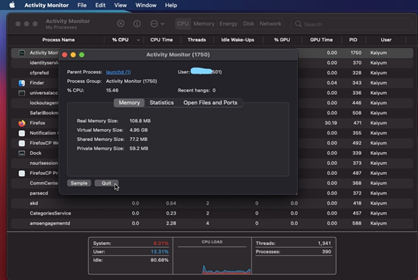
- Also, you can see every process’s information like size, used physical memory size, private memory size, ports, and others.
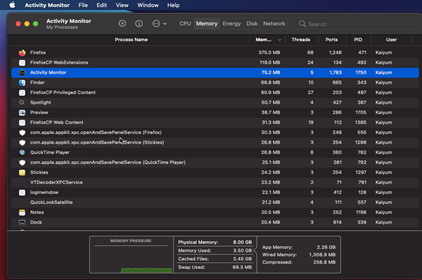
Additionally, You can also check the CPU usage graph on the dock panel. It will give a quick idea of how much CPU power is consumed by a particular app. Now, right-click on the Activity Monitor icon and select how you would like to see the CPU usage type on the panel. You will also be able to clear RAM if needed, along with a quick check on the CPU usage. Also, you will be able to force stop an app or activate and stopped the app.
Things to keep in mind
- Uninstalling unnecessary apps can significantly increase your CPU performance. If you notice that a particular app is significantly slowing down your Mac every time, then maybe it is time for you to find an alternative for that app.
- You will find many system optimization tools to monitor and manage your system. Sadly, most of such applications consume a hefty amount of resources themselves, thus end up slowing down the system even more. So, it is better to avoid those apps if you can manage your computer using built-in features.
- If you notice that you have a very high or full CPU usage during work, consider getting yourself more rams. It can substantially reduce the load on the CPU.
Summary: Find CPU usage on Mac
- Activity Monitor
- Go to the Applications folder in your Mac, then from the Utilities folder open Activity Monitor.
- CPU usage is displayed as a colored bar graph or a digit.